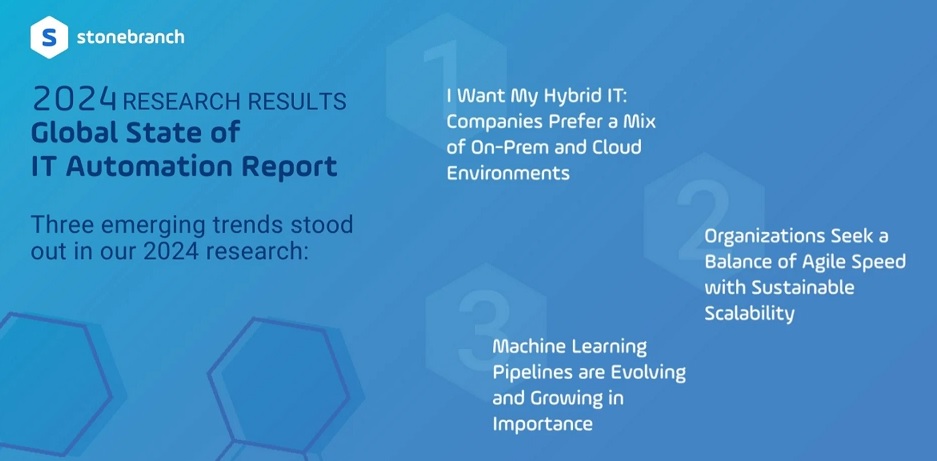Companies prefer a mix of on-prem and cloud environments, according to the 2024 Global State of IT Automation Report from Stonebranch. In only one year, hybrid IT usage has doubled from 34% to 68%.
Organizations are deciding where to store data — either on-prem or cloud — on a case-by-case basis. This approach is efficient and flexible but poses a challenge when it comes to automating and orchestrating these environments.

Source: Stonebranch
Other key automation trends from the report include:
Automation is Evolving into Orchestration
Driven by a desire to orchestrate across complex hybrid IT environments, 82% of respondents plan to replace legacy IT automation tools or add new automation tools to the mix.
Democratization of Automation Continues to Grow
88% of respondents enable end-users across the business with self-service access to IT automation. Those who plan to add or replace IT automation tools with a more modern solution cited a desire to add self-service as the leading reason for change.
Machine Learning Pipelines are Evolving and Growing in Importance
A significant 74% of respondents have already incorporated data and ML pipelines to operationalize their AI-driven initiatives. This is an indicator of many companies' strong commitment to the pivotal role of AI in shaping their future success.
Peter Baljet, Stonebranch CTO, concludes, "Our findings show that companies are adapting their IT automation and orchestration strategies to meet the specific challenges that come with cloud technologies. In the complex world of today's hybrid IT environments, automation is crucial to enhance performance, secure systems, and control costs."
Methodology: The report is based on a survey of IT automation professionals and executives, conducted by Censuswide between January 24 – February 5, 2024.
